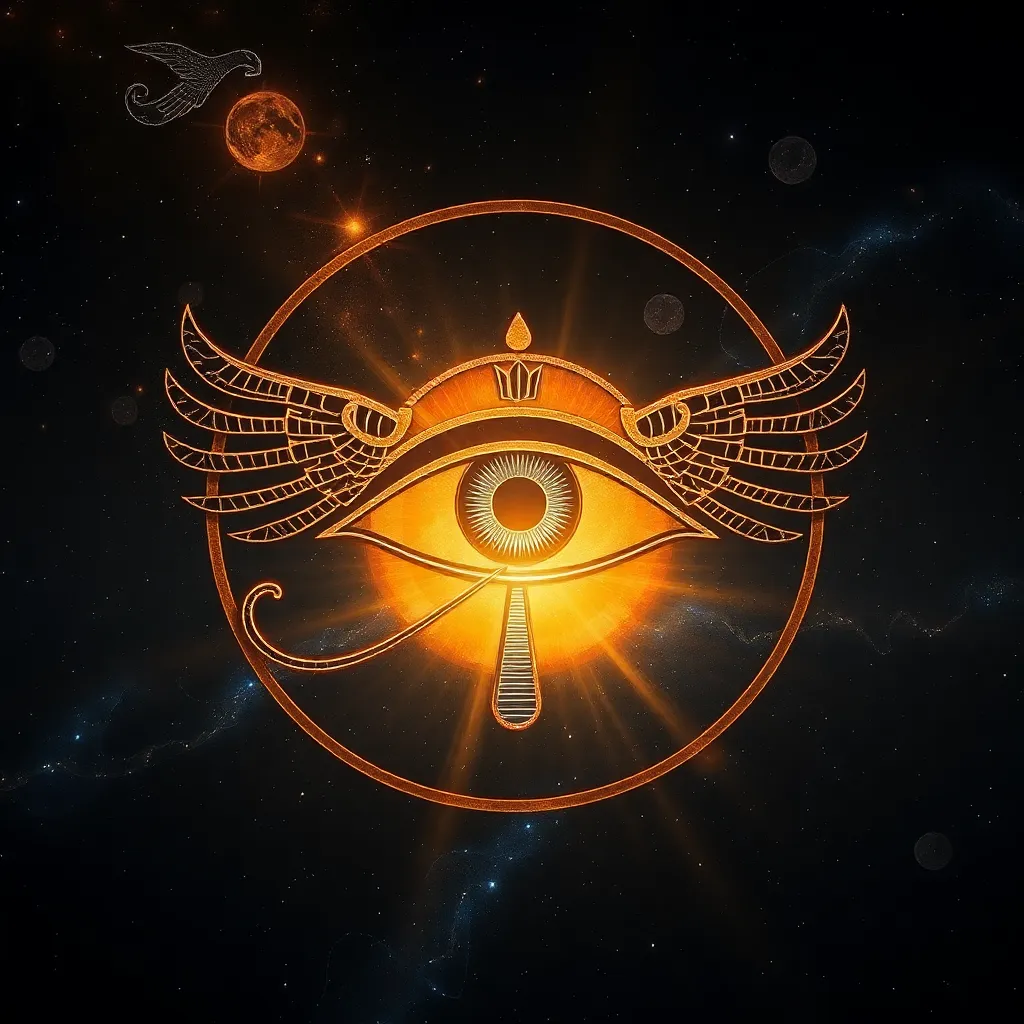The Cosmic Significance of the Eye of Ra in Egyptian Beliefs
I. Introduction
Egyptian mythology is a rich tapestry of gods, goddesses, and cosmic elements that shaped the ancient Egyptians’ understanding of the universe. Central to this mythology is the Eye of Ra, a powerful symbol representing the sun god Ra and embodying the themes of creation, protection, and destruction. This article explores the cosmic significance of the Eye of Ra, delving into its various representations, roles in mythology, and enduring legacy.
II. The Eye of Ra: Symbolism and Representation
The Eye of Ra is one of the most recognizable symbols in ancient Egyptian art and literature. Often depicted as a stylized eye with a teardrop or markings that enhance its visibility, the Eye of Ra serves as a powerful emblem of divine authority and protection.
In ancient texts, the Eye of Ra is closely connected to Ra, the sun god, who represents light, order, and creation. The Eye is often seen as a fierce and protective force, capable of both nurturing and punishing. It is essential to differentiate the Eye of Ra from the Eye of Horus, which symbolizes healing and protection but has different attributes and meanings within Egyptian cosmology.
III. The Eye of Ra in Creation Myths
The Eye of Ra plays a pivotal role in various creation myths, illustrating its significance in the establishment of the cosmos. According to some legends, the Eye was created from Ra’s own essence and became a powerful agent in the formation of the world.
- The Eye is often depicted as a manifestation of Ra’s will, bringing forth life and order from chaos.
- In the myths, the Eye is said to accompany Ra on his daily journey across the sky, symbolizing the sun’s life-giving power.
- The Eye’s journey is also associated with the cycles of day and night, reflecting the dual nature of existence.
IV. The Eye of Ra in Protection and Warfare
The Eye of Ra is not only a symbol of creation but also a protective force for the pharaohs and the Egyptian nation. In military contexts, the Eye was invoked to bolster the strength of the army and ensure victory in battle.
- Depictions of the Eye can be found in military artifacts, where it is often shown alongside weaponry and symbols of strength.
- Rituals and spells invoking the Eye were common among priests and warriors, believed to bring divine favor and protection in warfare.
V. The Dual Nature of the Eye: Destruction and Renewal
The Eye of Ra embodies a dual nature, representing both destruction and renewal. While it is a symbol of protection, it can also unleash severe punishments upon those who defy the divine order.
- Myths describe how the Eye would unleash its wrath against enemies, often depicted as a lioness or a fierce serpent.
- However, this destructive aspect is balanced by themes of renewal and regeneration, as the Eye also brings forth new life and opportunities for rebirth.
- This dynamic interplay of chaos and order is a fundamental aspect of Egyptian beliefs, illustrating the complexity of their cosmology.
VI. The Eye of Ra in Funerary Practices
The significance of the Eye of Ra extends into funerary practices, where it was incorporated into burial rites and tomb decorations. The Eye acted as a guide for the deceased, ensuring their safe passage into the afterlife.
- In tombs, the Eye of Ra is often depicted alongside other protective symbols, enhancing the security of the tomb’s occupant.
- The Eye’s role in the journey to the afterlife emphasizes the connection between life, death, and rebirth, reflecting a cyclical understanding of existence.
VII. Modern Interpretations and Cultural Legacy
The Eye of Ra continues to influence contemporary culture and art, with its imagery appearing in various forms of modern spirituality and symbolism. The symbol is often used to evoke themes of protection, insight, and divine guidance.
- In popular culture, the Eye of Ra has been adopted in movies, literature, and fashion, showcasing its timeless appeal.
- Modern spiritual movements may incorporate the Eye as a symbol of enlightenment and awareness, reflecting its ancient associations with divine power.
- Archaeological findings continue to shed light on the Eye’s historical significance, revealing its role in rituals and beliefs throughout ancient Egyptian civilization.
VIII. Conclusion
In summary, the Eye of Ra holds profound cosmic significance in Egyptian beliefs, representing themes of creation, protection, destruction, and renewal. Its enduring legacy resonates through history, influencing modern interpretations and cultural expressions.
The impact of the Eye of Ra serves as a reminder of the complexity and depth of ancient Egyptian mythology, inviting us to reflect on the timeless nature of these symbols and their relevance in our contemporary world. As we delve into the past, the Eye of Ra remains a powerful emblem of the interconnectedness of life, death, and the cosmos.




